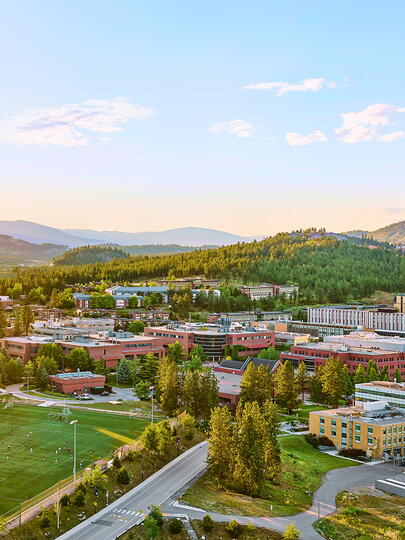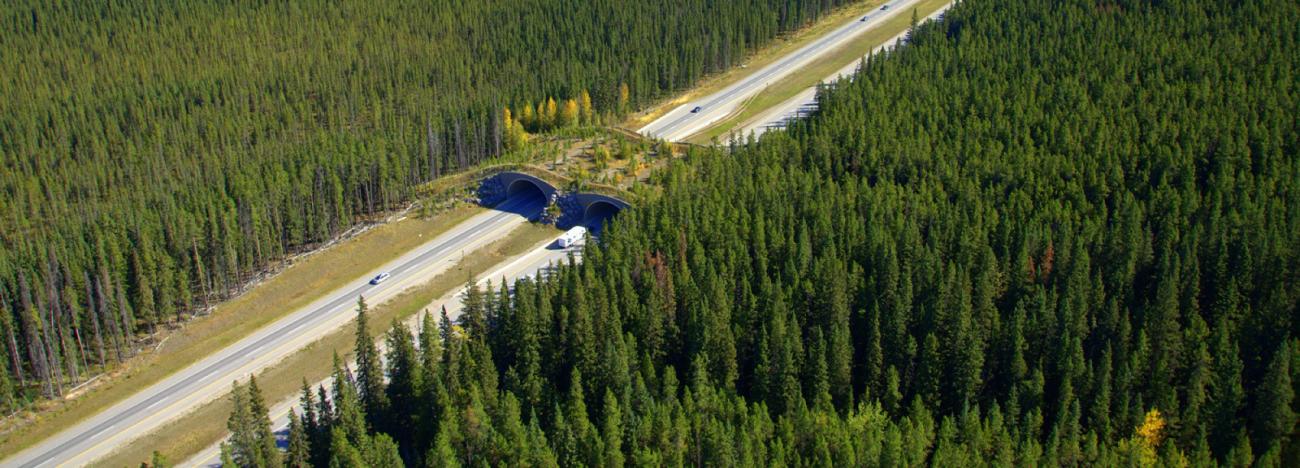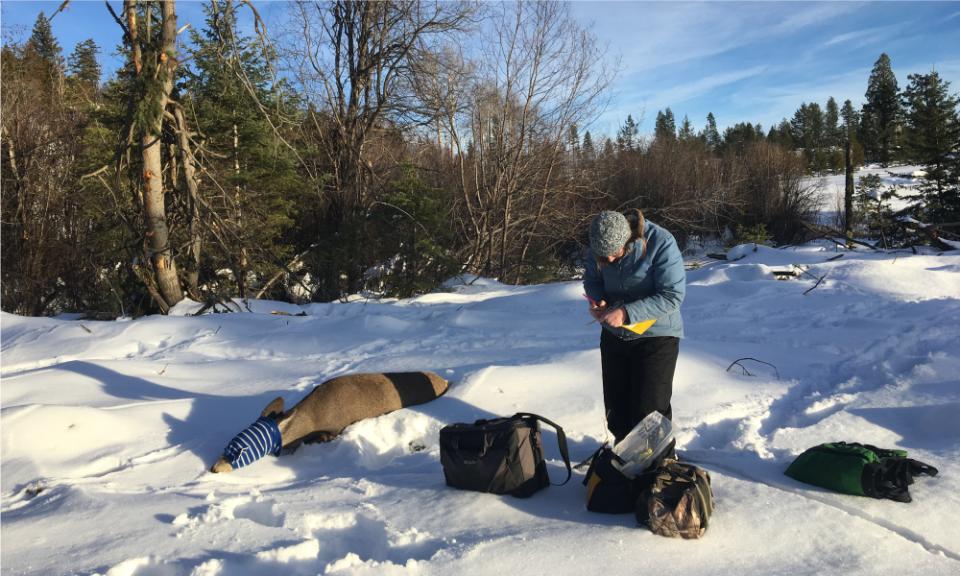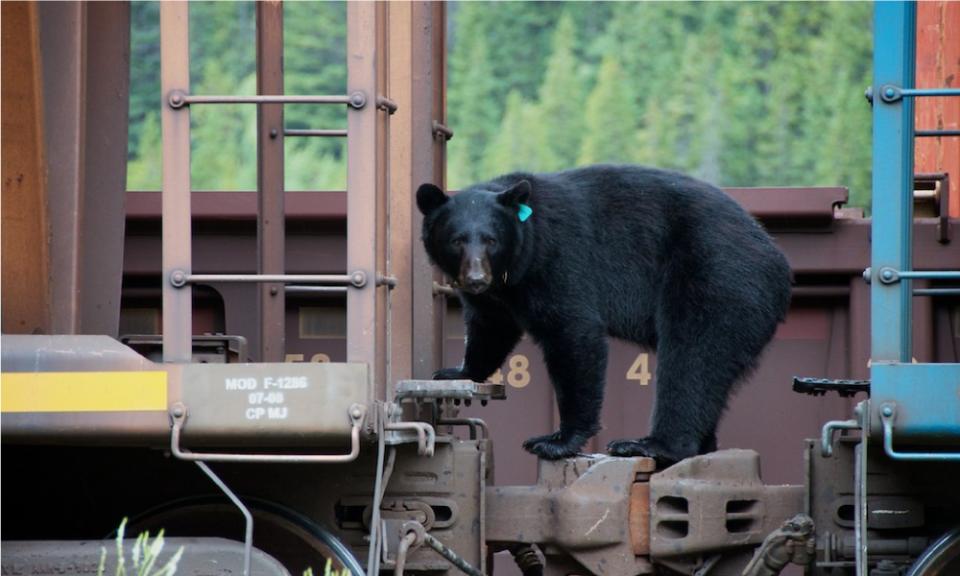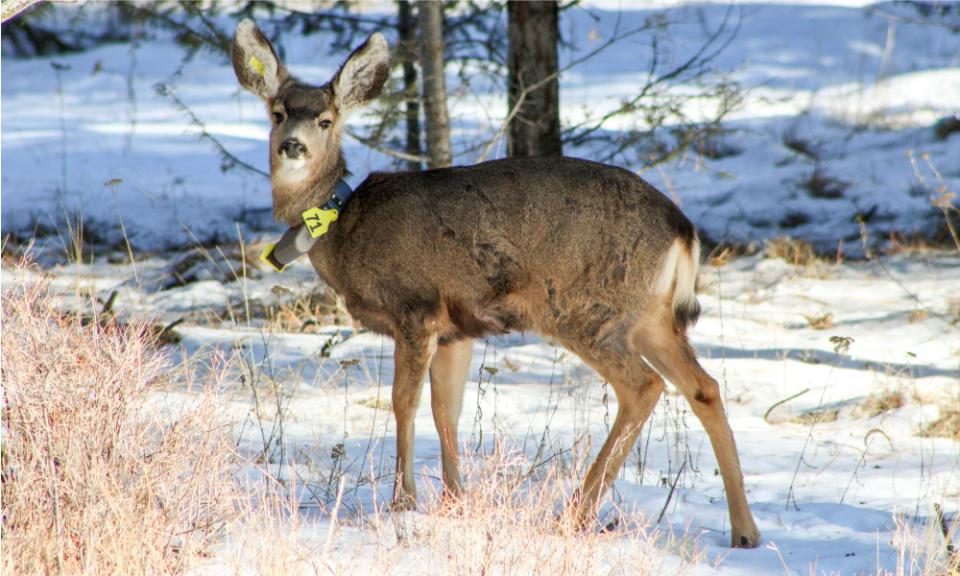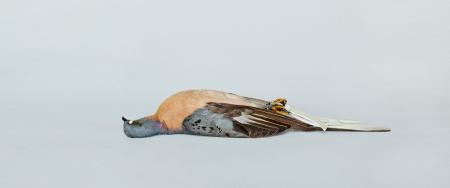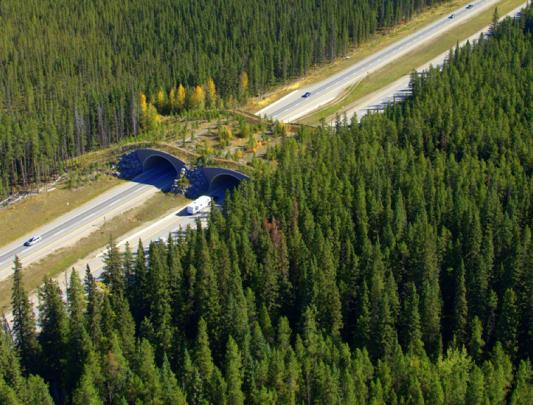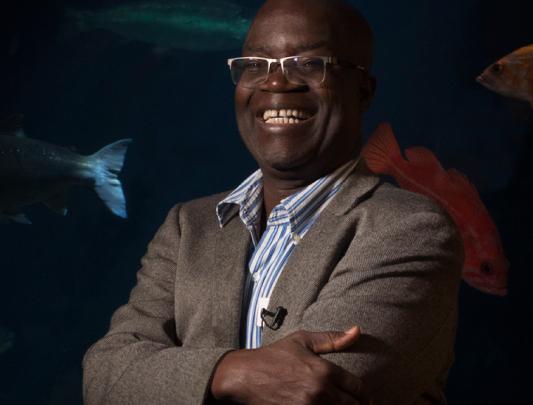Human infrastructure and the natural world
In the wild hinterland of the south Okanagan, among several thousand square kilometers of semi‑arid brushland and cliffs formed by long‑forgotten glaciers, a graduate student from UBC’s Wildlife Restoration Ecology (WiRE) Lab investigates how human‑made changes in the landscape are affecting mule deer populations in British Columbia.
Nearby, between Penticton and the US border, another student maps the vulnerability and physical connectivity of California bighorn sheep.
Somewhere in the middle, a third student fits cougars with tracking collars to study the predator’s relationship with the large prey in the valley – specifically, the deer and the sheep.
“So we’re going to see how one student’s data is eating another student’s data,” laughs Adam Ford, founder of the WiRE Lab at UBC’s Okanagan campus in Kelowna. With the WiRE Lab’s focus on the interaction between mammals co‑existing in the same ecosystem, it should come as no surprise that one student’s subject might occasionally serve as another subject’s snack.
Established in 2016, the WiRE Lab launched with only two students – one studying human‑bear conflict in the Bow Valley of Alberta, the other looking for new ways to count wolves with a combination of camera traps and sound recordings of their howls.
It’s since grown into a bustling research center for studying the relationship between humans and large animals, and the impact of human activity on the interactions between predators, prey, and plants in human‑modified landscapes. Newer student projects range from moose‑harvesting practices among Indigenous communities to the movements of mountain goats in Cathedral Park to the study of wolf‑human contact along the rugged west coast of Vancouver Island.
Through field experiments, GPS tracking, computer models, and satellite imagery, Ford and his students study how individuals and communities affect nature through forest management practices and urban growth, as well as how activities such as road‑building can disrupt migration routes and separate predator and prey, creating large‑scale conflict between humans and wildlife. This is especially true for large terrestrial mammals, which lie at the heart of the lab’s research.
“Big animals have a special role to play for people,” says Ford, who is also assistant professor in the Department of Biology and the Canada Research Chair in Wildlife Restoration Ecology. “These animals are also an important part of food security and cultural practices, and they are often elevated in conservation. So when people talk about conserving Yellowstone to Yukon, or the indicators of successful management in a protected area, they’re often thinking about things like grizzly bears and caribou.”
Ford himself was thinking of these things long before he could turn it into a profession. An avid fly‑fisherman while he was still in high school, and later working as a fishing guide in the Northwest Territories during breaks from college, he’d stand in Alberta’s Bow River or at the spot where the Mackenzie River drains out of Great Slave Lake and think about why fish congregate where they do.
“Fish are in predictable spots called lies,” he recalls. “And I got really curious about that. I’d look up from the river and across the land, and I thought that must be the same for deer and moose and the other animals.”
Measuring animal congregation has since become his academic obsession. Where do these animals want to be? Why do they want to be there? What impacts do those choices have on other animals and their own population? By the time Ford earned his PhD from UBC’s Department of Zoology in 2014, he had studied a range of mammals, from chipmunks on Vancouver Island to leopards, wild dogs, and antelope in Kenya.
Activities such as road‑building can disrupt migration routes and separate predator and prey, creating large‑scale conflict between humans and wildlife.
But despite his expertise, he doesn’t lead his lab students in the field, preferring instead to work as an assistant – carrying supplies and taking directions – to give them a leadership role in their projects.
“They are there to cut their teeth on those experiences on their own,” he says. “And as long as they’re doing it safely and have the resources to pull that off, I’m really happy for them to experience the world as they need to without me getting in the way.”
In the face of massive anthropogenic impacts on that world, in which a large proportion of the Earth’s animals and plants face potential extinction, the work can take a personal toll, and the responsibility can be daunting. There is always bad news for nature in the headlines – another upward tick in ocean temperature, another last‑of‑its‑kind forest or reef, another cornerstone species winking out of existence.
But the work continues.
“The goal is not to get caught up in the negativity of it,” says Ford, “to look for the victories.”
These victories are often of the political stripe. Restoration ecology comes down to pushing policy change as much as studying conservation, trying to build partnerships with people, governments, and the private sector, and trying to help them build partnerships with each other.
By using conservation study to inform conservation practice, the WiRE Lab injects science into the decision‑making process, whether through direct advice to policymakers or through influencing public perception of the critical issues we face.
“It’s not just conservation,” says Ford. “I want each student to place their work in the context of what ecological theory they are advancing. How are you trying to save the world? What motivates me is not how do I prepare my kids for this changing world, but how do I prepare the world for these kids?”
The centrality of policy is key to the WiRE Lab’s work. Rather than just picking questions out of thin air and saying let’s see if we can translate this science into something that would change policy, they target questions – identifying the problem first, and then designing experiments to figure out how to solve it. (“Choose any of our projects and I can tell you the policy relevant to it,” says Ford.) They then translate these solutions to fill the knowledge gap for the public and policymakers and generate real‑world changes in human behaviour.
By using conservation study to inform conservation practice, the WiRE Lab injects science into the decision‑making process, whether through direct advice to policymakers or through influencing public perception of the critical issues we face.
Although the WiRE Lab has only been around for three years, restoration ecology has been tackling these sorts of problems for decades. For large animals, the prevalence of human‑created barriers – such as roads, pipelines, and high‑tension power lines – has had a detrimental effect on their populations. Isolating animals from their food sources, mates, or protective environments can have a dramatic cumulative impact on the species.
While it is not realistic to remove these obstacles entirely, experiments have shown that these negative effects can be mitigated through projects such as bridges and tunnels – and even a “salmon cannon” that launches fish over dams – that allow animals to bypass barriers and enjoy greater freedom of movement. By conducting experiments like these and translating the results into real‑world solutions for policymakers, restoration ecologists have made significant strides towards reducing the impact of human infrastructure on the natural world.
But the rest of us are part of the equation too. Politicians have more contact with constituents than with scientists, and those voters are the people they listen to. Ford would like to see more individuals voicing their environmental concerns face‑to‑face with politicians, telling them that glyphosate spraying in the forest is no longer acceptable, that we need to find better policy on letting fire return to the landscape, that we need better road‑mitigation strategies to make them more permeable for wildlife and safer for people.
These aren’t just federal and provincial issues, either. The discoveries and insights that come out of the WiRE Lab also find their way to local governments that are keen to act on environmental issues directly affecting the local community.
Ford emphasizes that these local changes can have large repercussions. By supporting biodiversity and conservation efforts on a small scale, communities can help bring about pilot programs that, if successful, can provide crucial data and blueprints for larger changes that affect the province, or even the planet.
“I feel like the biggest conservation solutions are actually about people rather than what we can learn from nature,” Ford says. “I’m not a social scientist, but I do try in my work to see science as a way of resolving problems. So if I can put something on the table that everybody can agree on, then perhaps they can come together more closely to take action collectively, to make the change that they want to see in the world.”




